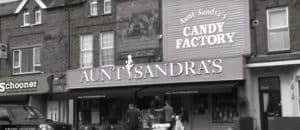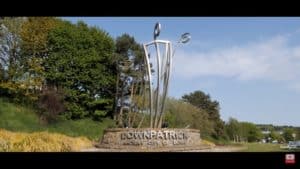The Role of Animals in Celtic Mythology and Folklore: Symbolism and Significance
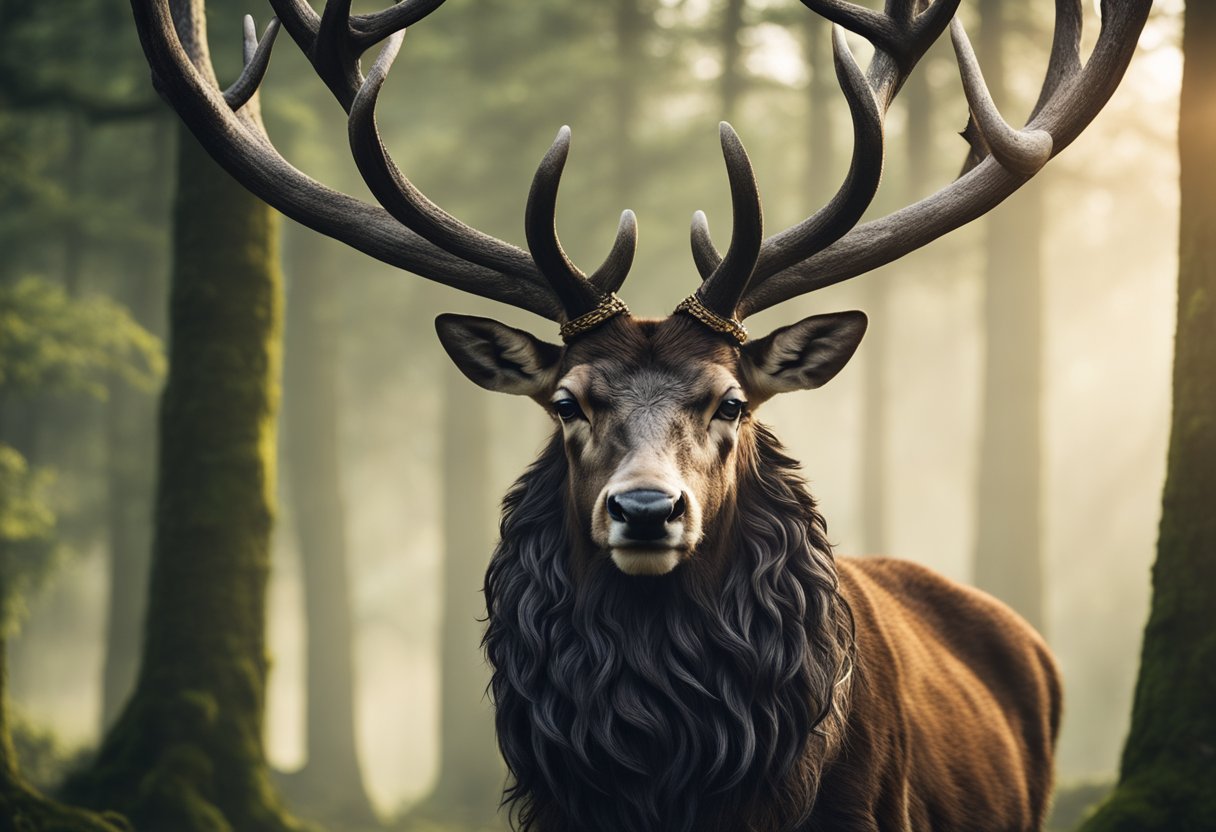
Updated On: April 20, 2024 by Eman Sameh
Animals In Celtic mythology were not merely creatures of the earth; they held a pivotal place at the heart of spiritual belief and cultural identity. These creatures were often seen as divine messengers, embodying the sacred connection between the natural world and the spiritual realm. The Celts held profound respect for nature and its inhabitants, embedding them deeply within their folklore, where animals frequently appeared as symbols of tribes or attributes of deities and sometimes even had transformative or otherworldly qualities.
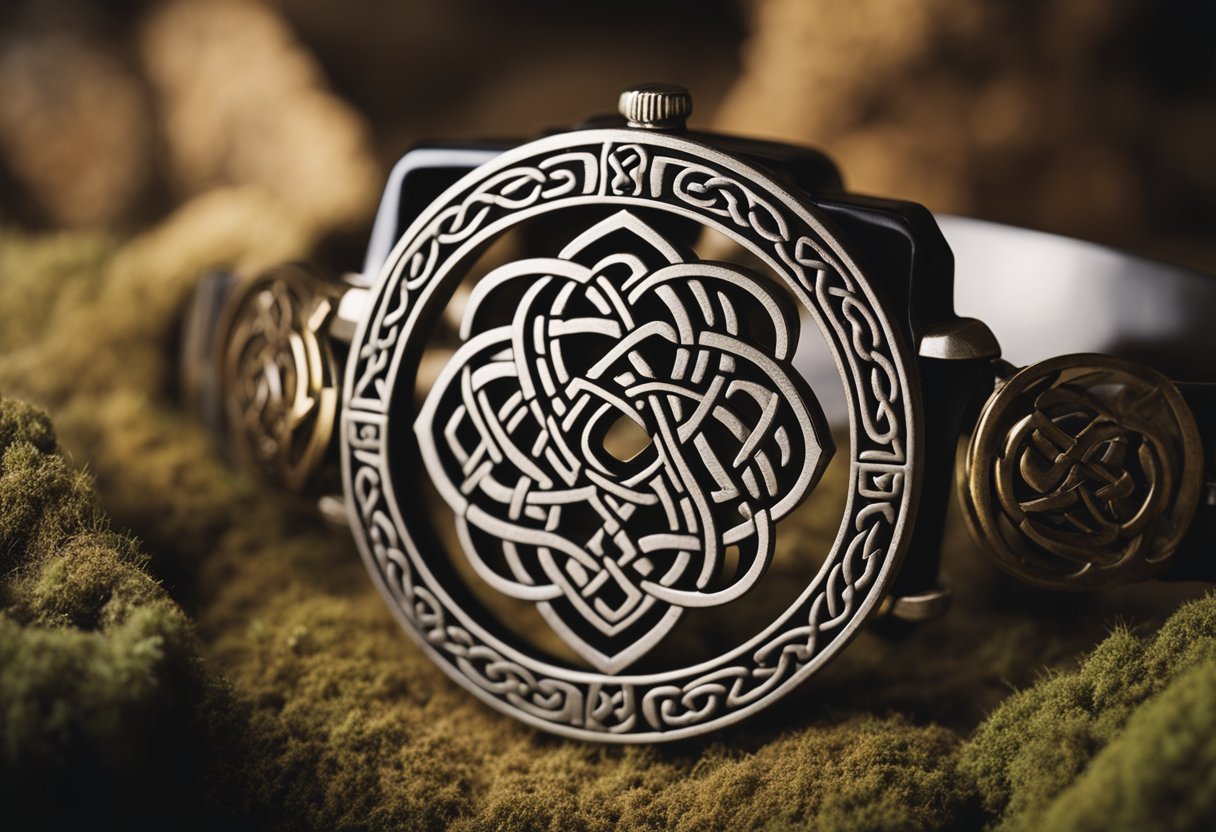
The bond between humans and animals in Celtic legends went beyond mere symbolism; it reflected everyday life and spirituality. Sacred animals were believed to possess inherent power, with certain creatures symbolising attributes like sovereignty, wisdom, or prowess in battle. Echoes of these beliefs persisted in Celtic rituals and festivals, and the reverence for animals influenced Celtic art, which often depicted interwoven animal forms in complex designs. Such integration of animals into mythology and culture illustrates the central role they played in shaping Celtic worldviews and practices.
Historical Context of Celtic Mythology
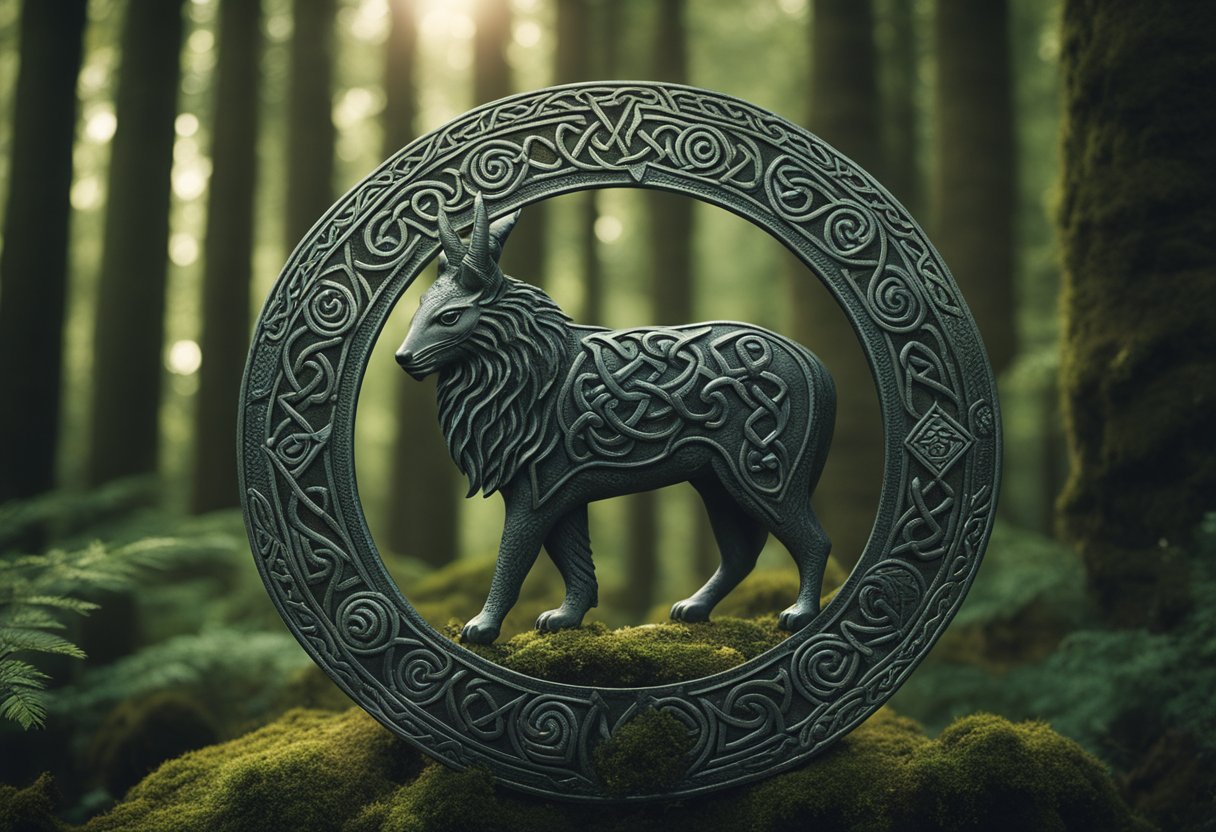
The Celtic peoples left a profound imprint on the societies of Ireland, Wales, and Scotland with their rich traditions and belief systems. Celebrated for their intricate artwork, complex societies, and profound spirituality, their mythology emerges as one of the most captivating facets of their legacy.
Celtic culture was strongly influenced by its Indo-European roots, sharing mythological concepts with other cultures from the same language family. The pantheon of Celtic gods and goddesses reflected a worldview deeply entwined with the natural world and the cycles of life and death. These deities were often linked to elements such as water, forests, or specific animals, weaving an interconnected tapestry of the sacred and the everyday.
The Roman conquest of Celtic lands left an indelible mark on these traditions, bringing with it changes to the religious landscape. In regions like Gaul, much of the Celtic religious practices were subsumed or obliterated by the dominant Roman culture. However, in lands less touched by Roman influence, such as Ireland, the old ways persisted longer, eventually intermingling with Christian beliefs.
Ireland remains especially noteworthy for its preservation of Celtic myths, primarily through the written form in manuscripts like the Book of Leinster. These stories offer us glimpses into a world where supernatural beings like the Tuatha Dé Danann played a significant role in the lore of the land.
The oral tradition was strong in Wales and Scotland, where bards recounted tales that celebrated heroes, explained natural phenomena, and offered moral lessons. The presence of mythical animals, both awe-inspiring and symbolic, within these stories speaks to the Celts’ veneration for the living creatures that shared their world.
Our understanding of these myths continues to evolve through scholarly research, archaeological discoveries, and the dedicated work of cultural platforms dedicated to the exploration of global heritage. One such platform, Connolly Cove, has played a part in bringing the vibrant tapestry of Celtic mythology to a wider audience, ensuring these ancient stories continue to be part of our shared human heritage.
Principal Deities and the Otherworld
In exploring Celtic mythology, we encounter a pantheon of potent deities and a mystical realm known as the Otherworld. These elements form the heart of Celtic spiritual belief and narrative tradition.
Gods and Goddesses of Celtic Mythology
Among the Tuatha Dé Danann, a tribe of gods worshipped by the ancient Celts, stands The Dagda, a father figure known for controlling life and death, agriculture, and the seasons. His prowess is matched by Brigid, the goddess of the hearth, healing, and poetry, whose presence is felt in the perpetual flame of creativity and inspiration. Lugh, a master of skills, presides over craftsmanship, and his prowess in battle is renowned. The fierce Morrigan embodies the forces of war and sovereignty, manifesting as a shapeshifter who could turn the tide of battle.
Cernunnos is another intriguing figure; often represented with antlers, he symbolises nature, fertility, and wealth. Together, these deities embody the core aspects of life, death, and the natural world, playing critical roles in the Celtic spiritual landscape.
The Otherworld in Celtic Belief
The Otherworld holds a special place in Celtic lore – a paralleled existence where deities, spirits, and ancestors reside. Referred to as Annwn in Welsh texts and Avalon in Arthurian legends, this realm is a source of timeless wisdom and enchantment. In the Irish tradition, the Otherworld takes several names, including Tír na nÓg and Mag Mell (or Magh Meall = Plain of Honey), representing a place free from the ravages of time and illness. Arawn, lord of the Otherworld in Welsh mythology, reigns in this mystical realm, presenting challenging lessons and rich rewards to those who encounter him.
The intersection between the Otherworld and the earthly domain shifts during pivotal times such as Samhain, when the veil is thinnest, allowing for interaction between humans and the supernatural. The influence of the Otherworld and its inhabitants permeates Celtic rites, influencing decisions that range from farming to warfare, reflecting the profound respect the Celts held for the unseen forces governing life and destiny.
Animals in Celtic Mythology and Their Symbols
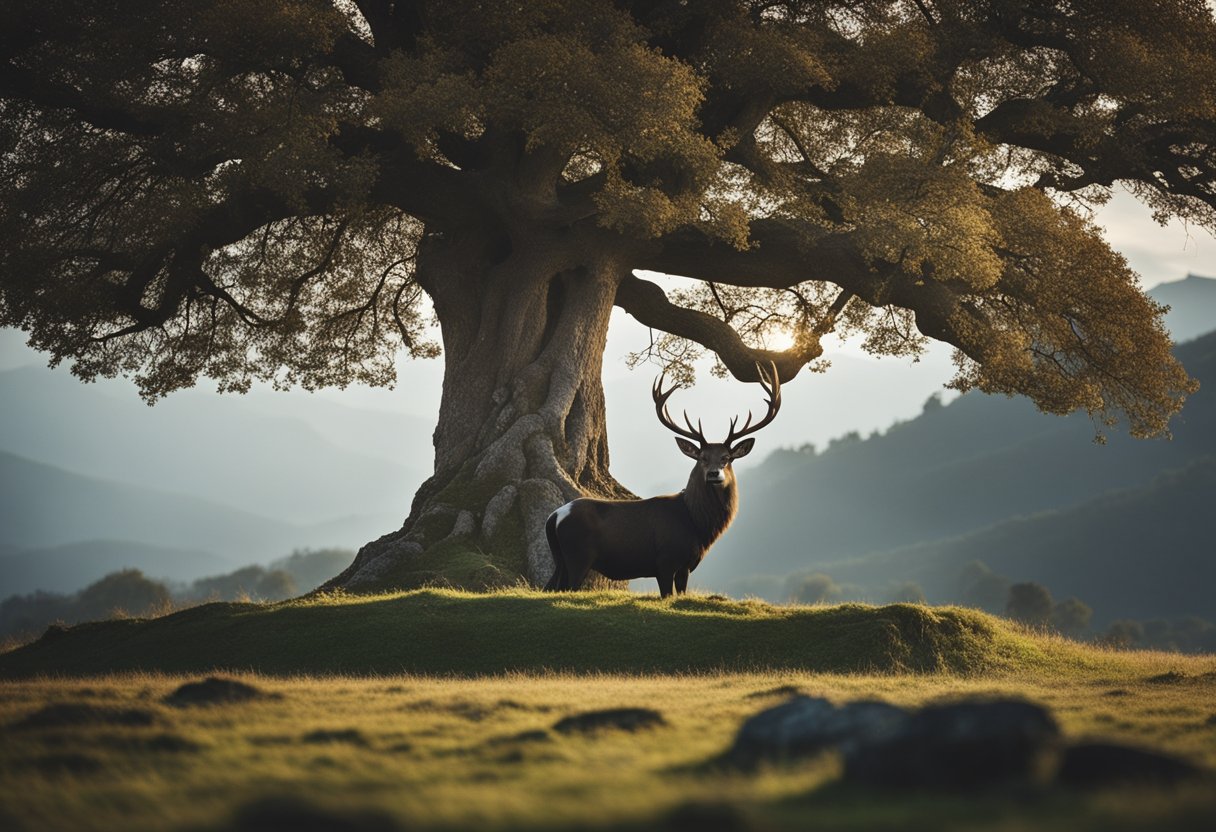
In Celtic mythology, specific animals were revered and held profound symbolic meanings, often embodying qualities essential to the ancient Celts.
Animal Symbols in Celtic Belief
Animals in Celtic culture were much more than just creatures that roamed the forests and fields; they were integral to the Celts’ spiritual world, serving as powerful symbols and guides. The cat, for example, represented mystery and independence, traits highly valued by these ancient people. Bears were seen as emblems of strength and leadership, while the crow signified transformation and change. Each animal, from the mighty stag symbolising nobility and rejuvenation to the industrious bee as an icon of community and hard work, held a special place in the Celtic belief system.
Animals and Transformation
The capability of animals to transform, often found in Celtic tales, was a critical theme. The salmon, known for its wisdom, was thought to gain its knowledge through transformation and the consumption of sacred nuts. In many stories, animals such as the hound transform into guides for heroes or become symbols of loyalty and protection. The mystical bird shapes, particularly the crane, carried connotations of higher states of consciousness and transitions between worlds. The snake, shedding its skin, became a potent emblem of healing and rebirth, guiding the Celts through times of change.
Through exploring the significance of these animals in Celtic culture, we not only learn about their mythology but also understand the attributes our ancestors admired.
Celtic Warriors and Heroic Tales
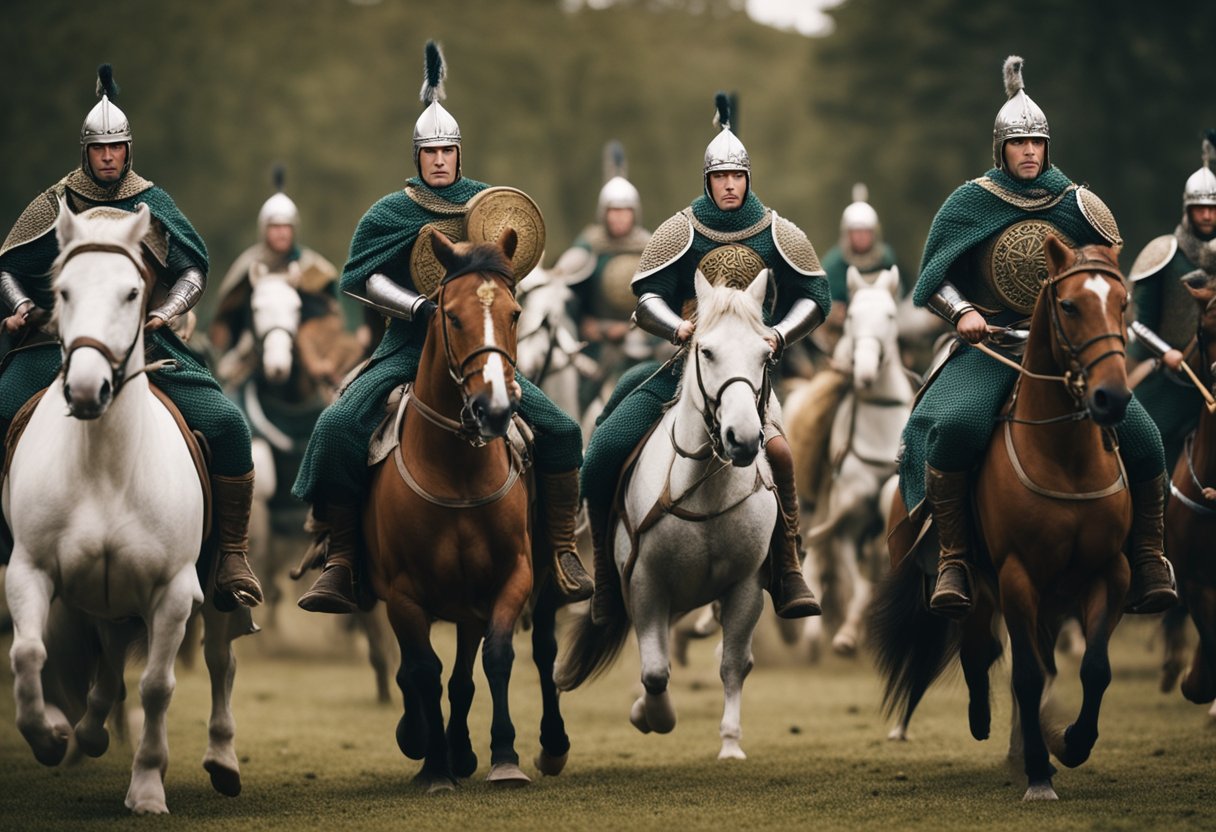
Before delving into the tales and symbology, it’s pivotal to recognise that Celtic myths are deeply intertwined with the natural world. The warriors and heroes within these tales often draw their strength and guidance from animals, which are prevalent symbols of might and courage.
Legendary Heroes and Their Animal Guides
Celtic lore is replete with narratives of heroes like Cú Chulainn, whose extraordinary feats are still told today. These characters frequently have animal guides that not only reflect their inner qualities but also serve as protectors. For instance, in the Táin Bó Cúailnge, the might of warriors is often paralleled with primal animal strength, as animals were seen as both physical and spiritual guides throughout their endeavours.
Tales of Bravery and Martial Symbolism
Celtic stories are rich with themes of boldness and conflict. A hero’s journey was rarely without tests of strength or confrontations signifying the protection of their community or individual valour. Animals, such as the raven or the boar, became emblems of these martial qualities, often adorning shields and weaponry. This symbolism served as an embodiment of the warrior’s spirit and their willingness to face any adversaries with fierce determination.
Animalistic Deities and Their Roles
In Celtic mythology, animalistic deities were often venerated for their association with various aspects of life, such as wisdom, strength, and fertility. These deities frequently bore animal characteristics or were intricately linked to animal symbols.
Deities Associated with Animals
Cernunnos, sometimes depicted with antlers, is a Celtic god associated with animals, fertility, and the underworld. Often referred to as the “Horned God,” Cernunnos’s worship underscores the Celts’ reverence for the stag, symbolising power and virility. Learn more on Roman Britain.
Another significant animalistic deity was the goddess Epona, protector of horses. Worshipped throughout the Celtic and Roman worlds, she personified strength and mobility, showcasing the high status of the horse in Celtic society.
In addition to these, the Morrígan, often associated with crows and ravens, embodied the attributes of war and fate. This fearsome goddess would fly over battlefields as a raven, implying the Celts’ linking of these birds with prophecy and warfare. Her presence in mythology also highlights a belief in the transformative power of deities, as she would often shapeshift into an animal form.
Celebration of Animal Attributes
Animal attributes were highly celebrated and often imbued with symbolic meanings. For example, the salmon was considered the oldest creature and a symbol of wisdom. According to legend, the Salmon of Knowledge possessed all the world’s knowledge. Details on Celtic animism.
Certain animals, exemplified by the boar, were admired for their ferocity and fighting spirit. The boar is recurrent in Celtic iconography and lore, symbolising warriors’ strength and tenacity.
The multi-faceted deity Bran, whose name means “raven,” further showcases the celebration of specific animal characteristics within the Celtic pantheon. Bran’s association with the raven highlights its status as a cultural emblem of prophetic insight and protection.
Through these divine personifications, we see a society that not only respects but also integrates the traits of animals into their understanding of power, guidance, and the natural world. We uncover a mythology rich in symbolism and a pantheon where animals are not mere creatures but pivotal elements of divine essence and influence.
Festivals, Rituals, and Seasonal Celebrations
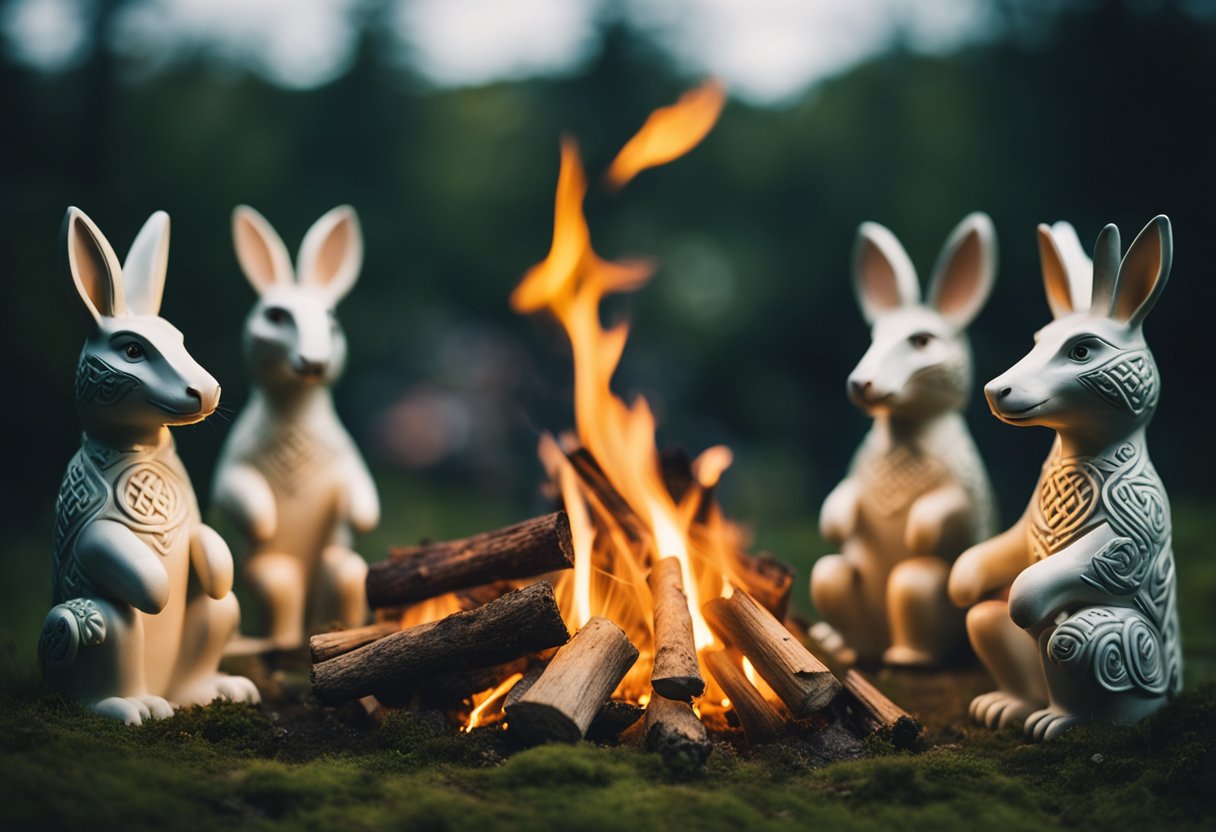
In the rich tapestry of Celtic tradition, animals are not just fauna; they are revered symbols intertwined with the most sacred times of the year.
Significance of Animals in Celtic Festivals
Animals held profound significance in Celtic festivals, embodying the ideals of harmony and balance. The Celtic Calendar marked seasonal transitions with great reverence for the natural world, where each animal played its role. Among the Tuatha Dé Danann, a pantheon of Irish gods, animals were often elevated to divine status, serving as their symbols or messengers. Noteworthy is Samhain, the transition into the darker half of the year, where corporeal separations thinned and animals like black cats were thought to cross between worlds.
Ritual Practices Involving Animals
The Druids, as the learned class within Celtic societies, conducted many ritual practices involving animals. These rituals often employed elements of magic, seeking to maintain the equilibrium within the natural world. Fire, water, and earth played crucial roles in these ceremonies, seen as the life-sustaining elements, with animals frequently at the heart of rituals. Instances include using the innate characteristics of animals in divination or as totems to connect with deities, channel energies, and seek guidance.
Interactions Between Humans and Animals

In Celtic mythology, relationships between humans and animals were not only common but steeped in meaning. These bonds highlighted the intricate connection humans shared with the natural world, often serving as conduits for spiritual guidance and life lessons.
Kinship and Sacred Bonds
We find within the Celtic narrative that animals were frequently regarded as kin, with strong, sacred bonds uniting humans and creatures. Animals were not mere beasts of burden or game for hunting but were instead cherished for their particular attributes. For example, the durable and imposing bull embodied strength and potency, often serving as a guide to warriors who admired its robustness and virility. Likewise, the stag, commanding in its own right, symbolised regality and was also connected to the concept of rejuvenation and cyclic life, owing to its antlers, which were shed and regrown annually.
Lessons from Animal Encounters
Animal encounters in these myths were more than mere meetings; they often served as critical life lessons instilling values such as wisdom, cunning and respect. A prime example of this is the salmon of knowledge, an aquatic creature brimming with wisdom and sought by many. When humans caught and consumed the salmon, they were imbued with the creature’s wisdom, signifying the transference of knowledge through a deeply spiritual exchange. Similarly, encountering the likes of the crafty fox could remind one of the value of cunning as a survival tactic.
In Celtic folklore, the banshee, though not an animal, is sometimes depicted as a creature in close harmony with the natural world. Her wails and foresight of death commanded respect and prepared those who heard her cries for impending change. These stories highlight a culture where harmony between all living beings is essential and respected.
The Influence of Animals on Celtic Warfare
In Celtic tribes, animals were not just a source of sustenance but also played integral roles during times of war, often seen as emblematic figures of protection and might that influenced tribal conflicts.
Animal Symbolism in Tribal Conflict
Stags and hounds, common Celtic totems, symbolised grace and ferocity, respectively. Warriors often adorned their armour and weaponry with these animal emblems as a form of psychological warfare, instilling fear and respect among foes. For instance, the Táin, an epic tale, depicts storied battles where animal motifs are prevalent, underscoring their significant symbolical impact on Celtic warfare. The stag, synonymous with sovereignty and leadership, represented the king’s status on the battlefield, inspiring warriors to display comparable courage and strength.
Animals as Protectors and Guides in War
Animals were seen as more than symbols; they were companions and guides. The hound was not only a weapon of war but also a protector, synonymous with loyalty and defence. The bear was another such powerful totem, embodying raw strength and protection for Celtic warriors engaging in conflict. Bears were often invoked before battles, calling upon their spirit for strength and resilience during combat. These animals guided tribes through the turmoil of war, ensuring moral and physical guidance to those who called upon them.
Mortality, Rebirth, and Celtic Afterlife
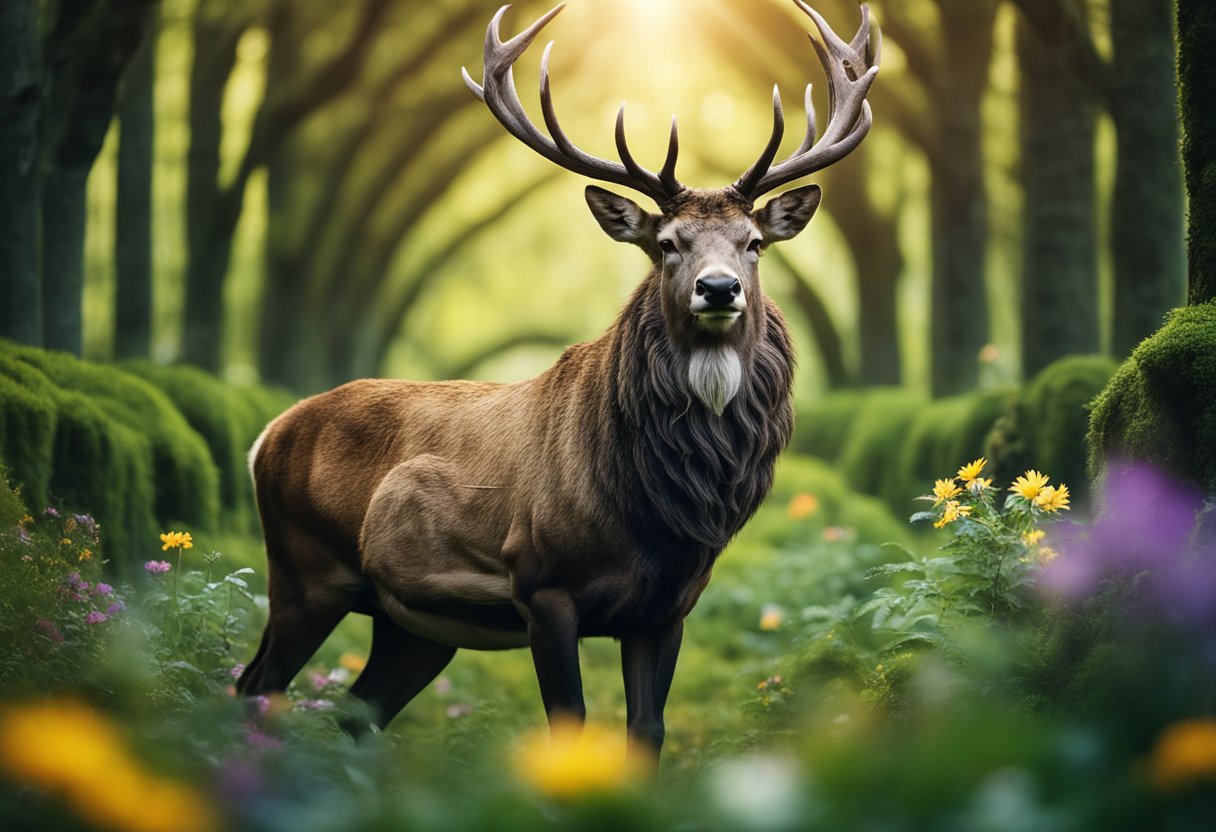
In Celtic mythology, the themes of death and rebirth are intricately linked with the natural world, with various animals symbolising these profound transitions. The Celts believed in a seamless connection between the physical and spiritual realms, often featuring animals as pivotal guides in the journey of souls.
Animals Associated with Death and Rebirth
Crows and ravens held powerful significance in Celtic lore, specifically connecting to transformation and the cycle of life. They were considered to be messengers between worlds, often linked with the war deity Morrígan, symbolising death as well as protection in battle. The presence of these birds could also prefigure change or the need for rebirth within the self.
The Banshee, a supernatural being, is another key element in Celtic folklore. Traditionally understood as a harbinger of death, her mournful wail was believed to foretell the demise of a family member. This spectral figure embodies a potent manifestation of the link between the mortal world and the Otherworld.
Spirit Animals and the Journey of Souls
In the Celtic view of the afterlife, the Otherworld was reached via significant thresholds such as water or burial mounds. Arawn, often associated with this realm, was a deity of spirituality and the hunt who presided over a land of both joy and terror. Animals in this context, from spirited stags to dogs with ties to rebirth and transformation, could act as guides for souls navigating the enigmatic paths of the Otherworld.
The Celts revered these spirit animals, understanding them as both companions and symbolic bearers of deeper messages. They could indicate the presence of the Otherworld as one draws nearer to the mysteries of death and rebirth, offering comfort or warnings in equal measure.
Contemporary Relevance and Cultural Legacy

Celtic mythology and folklore continue to influence modern culture, as the ancient tales and the animals within them remain potent symbols of Celtic heritage. Embracing both cultural identity and artistic inspiration, these narratives have transcended time to retain their prominence in today’s society.
Modern Interpretations of Celtic Animal Mythology
Irish and Welsh contributions to Celtic animal mythology have woven their way into modern culture via various creative expressions. Film, literature, and art frequently draw from the mystical themes found in the tales of transformative salmon, noble hounds, or prophetic birds. In Scotland, using creatures like the stag or the mythical selkie in storytelling reflects an enduring reverence for the natural world and its embodiment of Celtic values and symbols.
Preservation of Celtic Traditions
The heritage of Celtic nations is honoured through efforts to sustain traditional celebrations and practices. Organisations like Connolly Cove play a pivotal role in this, fostering an understanding and appreciation for Celtic culture. They encourage the conservation of wildlife, landscapes, and belief systems that are intrinsic to the identity of these regions. By sharing knowledge and stories of the Celtic past, they ensure that the cultural legacy is passed down to future generations.
Frequently Asked Questions
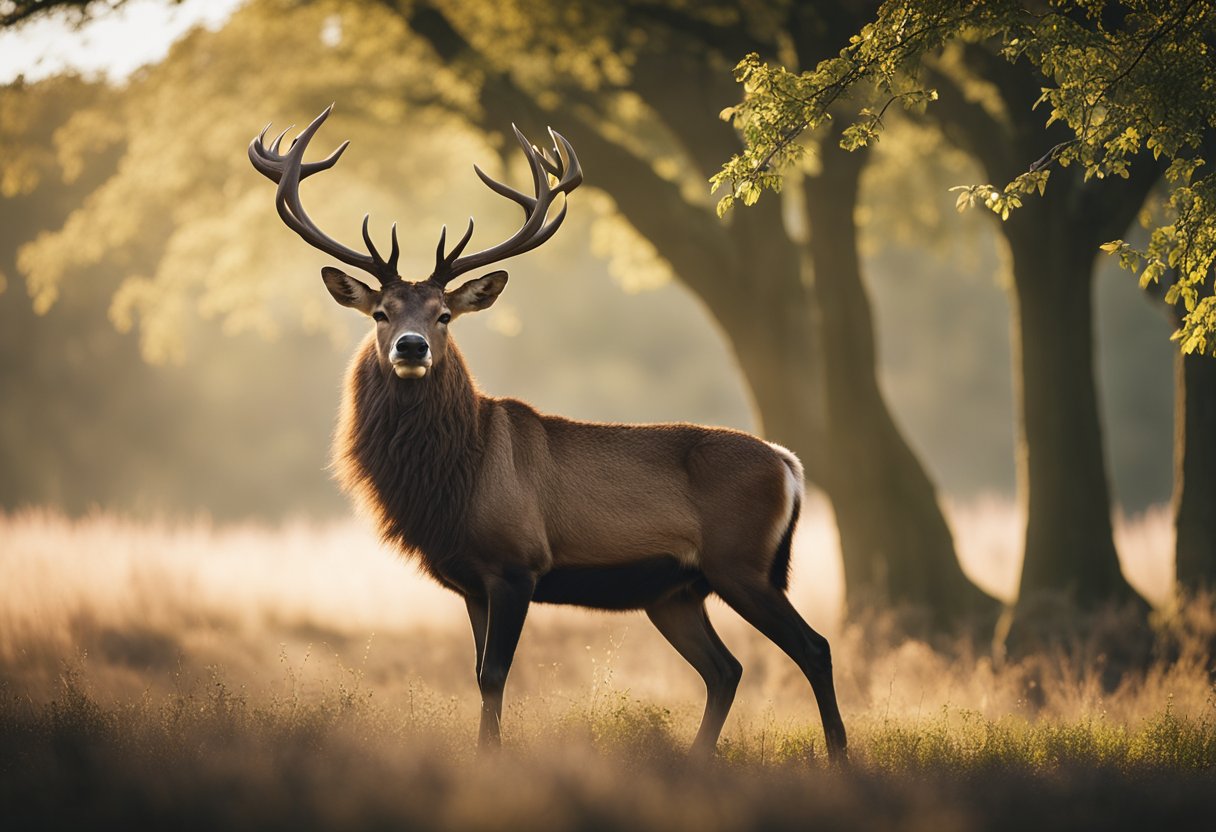
In this section, we address some of the most common inquiries regarding the fascinating roles and symbolic meanings of animals in Celtic mythology and folklore.
Which animals hold significant roles in Celtic mythology and folklore?
Certain animals are revered in Celtic traditions for their symbolic meanings. The horse, for example, stands for sovereignty and guidance, while the salmon is celebrated for its wisdom. The Celts also respected the boar for its courage and the stag for its masculinity and vitality. Each creature carried a deeply symbolic role within Celtic spirituality and cultural stories.
How do animal symbols contribute to the understanding of Celtic beliefs?
Animal symbols serve as emblems of Celtic clans and highlight the Celts’ profound connection with nature. They offer insights into the traits valued by the Celts, such as the wisdom of the salmon or the transformational power of the butterfly. These animals encapsulate the virtues and attributes that the Celtic people admired and aspired to embody.
In what ways did the Celts incorporate animals into their spiritual practices?
In Celtic spirituality, animals were often seen as guides or protectors, connecting the human realm with the otherworldly. The Celts practised various rituals where animals were featured prominently, such as the veneration of the horse during Epona’s feast, which indicated the creature’s integral role in religious ceremonies.
What meanings are attributed to the most prominent Celtic totem animals?
Celtic totem animals are diverse in their symbolic meanings. The raven symbolises prophecy and insight, while the wolf is associated with intuition and guidance. The cat is linked with mystery and the otherworld in Celtic lore. Each totem animal is a key to understanding distinct aspects of life and spirituality in Celtic culture.
Can specific Celtic art pieces be linked to the reverence of certain animals?
Indeed, Celtic art frequently depicts animals, showcasing their significance in Celtic society. Knotwork patterns may include the snake, representing transformation, and stone carvings or metalwork often portray sacred animals like the Boannan or river goddess with her associated bird imagery.
How are animals represented in Celtic myths, and what do they represent?
In Celtic myths, animals are not mere background characters; they are potent symbols that carry specific meanings. For instance, the Celtic myth of the transformational salmon of knowledge encapsulates the pursuit of wisdom, whereas the hound often represents loyalty and protection. These representations offer a symbolic language through which the Celts expressed and transmitted their values and beliefs.


